Lunchtime Lecture Series
The Departmental Lunchtime Lecture series began in 2017. The purpose of the series is to hear from some of the world's leading physicists about current research and to provide a forum for the undergraduate community to meet with fellow students and faculty. There is usually a lunch before or following the talk, providing an opportunity to meet the speaker and network with fellow students and academic staff.
UG Seminar Series
2023-24 Lectures
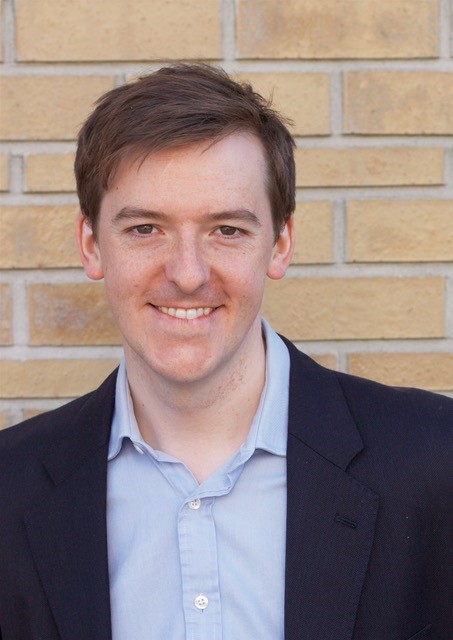 Talk Title: Hunting for dark matter: what role can theorists play?
Talk Title: Hunting for dark matter: what role can theorists play?
Date: 1 November 2023 at 12:00 (GMT)
Location: Lecture Theatre 1, Blackett Lab
delivery by Dr Christopher McCabe
Abstract: Among the most prominent puzzles within physics today is to understand the nature of “dark matter”. The ubiquitous dark matter reveals its presence through numerous astrophysical and cosmological observations. Many of the properties of this dark matter remain unknown to us, but it accounts for about 27% of the matter content of the Universe. There is a rich tapestry of dark matter theories and remarkably, they generically predict that dark matter interacts with ordinary matter. This key insight has prompted the hunt for such interactions in laboratory experiments across the world. In this talk, I will briefly discuss two experiments where UK-based researchers are playing a world-leading role, and discuss how physicists with a background in theoretical physics can contribute to these experimental efforts.
Biography: Dr Christopher McCabe is a Reader at King's College London. He obtained his doctorate in Theoretical Physics from the University of Oxford and has held postdoctoral positions at the IPPP Durham University and GRAPPA University of Amsterdam. He has extensive experience across a broad range of dark matter phenomenology that relates directly to experiment: interpreting results and exploring the physics that could be achieved with present and future projects. He is a member of the AION and MIGDAL Collaborations, has served on the STFC’s Particle-Astrophysics Advisory Panel, is the Chair of the Dark Matter UK (DMUK) network, and is the Treasurer of the IoP Astro-Particle Physics group.

Date: 29 February 2024 at 17:00 (GMT)
Location: Lecture Theatre 1, Blackett Lab
delivery by Dr Jan-Peter Bähner
Abstract: Stellarators, alongside tokamaks, are one of the most promising concepts to achieve the commercial use of nuclear fusion energy. The Wendelstein 7-X stellarator in Germany is currently the largest and most advanced experiment in world demonstrating the immense progress in recent decades with record-breaking performance in experiments. The advances in stellarator research and the large scale of new experiments shift the focus to new remaining issues on the path to a reactor, which are similar to the challenges for tokamaks. One of these stumbling blocks is turbulence and the associated transport of heat and particles. However, the stellarator concept has an ace up its sleeve: there is the hope to reduce the negative impact of turbulence through optimisation of the magnetic field geometry – if we manage to understand turbulence sufficiently well in theory and experiment. This talk aims to briefly introduce stellarators and plasma turbulence on the example of Wendelstein 7-X and outline current research questions.
Biography: Dr Jan-Peter Bähner is a Postdoctoral Associate at the MIT Plasma Science and Fusion Center working on the Wendelstein 7-X stellarator experiment at the Max Planck Institute for Plasma Physics in Greifswald, Germany. He received a B.Sc. in Physics at the RWTH Aachen University in 2016 and a M.Sc. in Physics at Imperial College London in 2018. In 2019, he started his research on stellarator turbulence with a focus on the Phase Contrast Imaging diagnostic at the Max Planck Institute for Plasma Physics in Greifswald, where he received a PhD through the University of Greifswald in 2022.
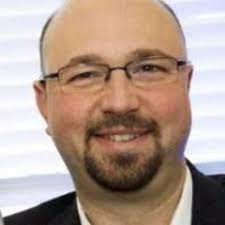 Talk Title: Update on The Spherical Tokamak route to compact fusion reactors
Talk Title: Update on The Spherical Tokamak route to compact fusion reactors
Date: 6 March 2024 at 12:00 (GMT)
Location: Lecture Theatre 1, Blackett Lab
delivery by Prof Michele Romanelli D.IC
Abstract: Following the achievement in 2022 of record ion-temperatures, ST40 has been enhanced with a new Thomson Scattering system, new bolometer, improved ECE system and several other new diagnostics. These, along with reduction of in vessel passive currents and development of an advanced control system has allowed to establish robust, well diagnosed double-null divertor scenarios for the study of H-mode confinement scaling, development of high beta plasmas, characterization of SOL and power loads on divertor target. This presentation will review the latest results and outline plans for future experiments aimed at progressing Tokamak Energy’s exploration of the ST reactor physics basis.
Biography: Prof Michele Romanelli, D.IC (Doctor of Imperial College) is the Plasma Theory and Modelling Manager and Principal Physicist at Tokamak Energy Ltd based at Milton Park, Abingdon. His primary research interest is plasma turbulence, transport and confinement in compact, spherical tokamak reactors. He is also interested in computational physics, and his work span activities ranging from analytic theory and advanced computing. Michele received his Bachelor of Science degree in Physics from the University of Torino, Italy, in 1995 and his PhD in Physics from the Imperial College of London in 1998. He then went on to hold several research / managerial positions at JET, ENEA and CEA, before becoming JET Deputy Task Force Leader and EUROfusion Leader for the Code Development Project.
Michele has co-supervised several PhD students from UK and international Universities. Michele joined Tokamak Energy Ltd in 2020.
Prof Dr Michele Romanelli | University of Oxford Department of Physics
2022-23 Lectures
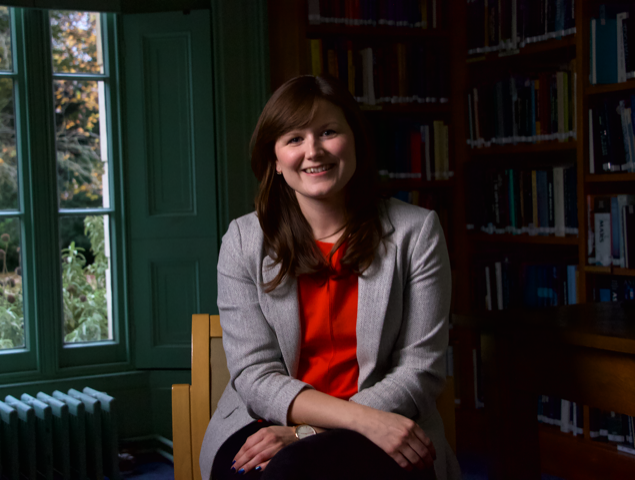 Talk Title: It’s not easy growing a supermassive black hole
Talk Title: It’s not easy growing a supermassive black hole
Date: 30 November 2022 at 12:00 (GMT)
Location: Live on MS Teams
delivered by Dr. Rebecca Smethurst
Abstract: When we think of black holes, we often think of them as endless hoovers, sucking up anything around them. In reality though, it’s very difficult to grow a black hole; to get matter close enough to that point of no return. Instead, most matter will happily orbit a black hole. Just like the Earth orbits the Sun, the Sun orbits a supermassive black hole at the centre of the Milky Way over 4 million times more massive than the Sun itself. So if it’s difficult to grow a black hole, how in the universe did supermassive black holes like this get so big?
Biography: Dr Becky Smethurst is an award-winning astrophysicist and science communicator at the University of Oxford, specialising in how galaxies co-evolve with their supermassive black holes. She was recently awarded the Royal Astronomical Society’s Research Fellowship for 2022. Her YouTube channel, Dr Becky, has over 450,000 subscribers who engage with her videos on weird objects in space, the history of science and monthly recaps of space news. Her latest book, A Brief History of Black Holes is out on 1st September 2022.
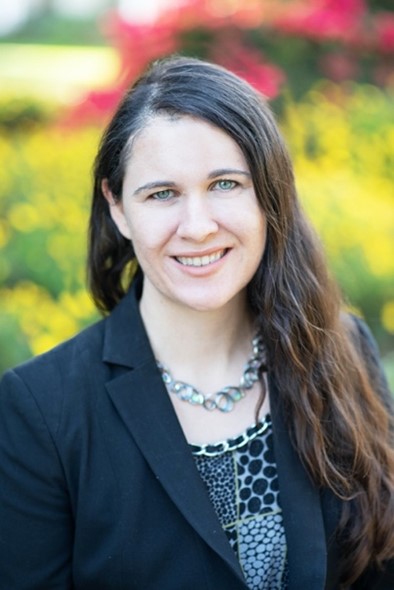 Talk Title: Negative Triangularity: the Final Frontier?
Talk Title: Negative Triangularity: the Final Frontier?
Date: 1st February 2023 at 15:00 (GMT)
Location: Live online via Zoom - joining details will be released nearer to the date
delivered by Dr. Kathreen Thome
Biography: Kathreen Thome is a General Atomics scientist that works on both the DIII-D and NSTX-U tokamaks. She received a B.S in Nuclear Science and Engineering from MIT in 2009 and her PhD in 2016 in Engineering Physics from the University of Wisconsin–Madison. At DIII-D and NSTX-U, she has participated in diverse research topics, including the development of steady-state plasma scenarios for fusion reactors, transport physics and modeling, and hands-on development of a high-frequency magnetic diagnostic for energetic particles. Dr. Thome is a co-leader of the DIII-D negative triangularity working group, part of the DIII-D Diversity, Equity and Inclusion panel, head of the NSTX-U scenario group, an executive member of the APS Division of Plasma Physics, and regularly participates in outreach and mentoring activities.
2021-22 Lectures
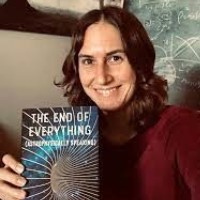
Talk Title: Physics at the End of the Universe
Date: 8 November 2021 at 12:00 (GMT)
Location: Lecture Theatre 1
delivered by Dr Katie Mack
watch the lecture recording
Abstract: The Big Bang theory tells the story of the beginning of the Universe, our cosmic home for the last 13.8 billion years. But what is the story of its end? I’ll share what modern astrophysics tells us about the ultimate fate of the cosmos - whether it will end with a bang, or a whimper, or something entirely unexpected - and what each possible end would look like if there were people there to see it.
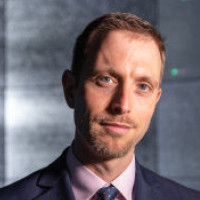
Talk Title: The Machine Learning revolution in Cosmology
Date: 24 November 2021 at 12:00 (GMT)
delivered by Prof Roberto Trotta
watch the lecture recording
Abstract: At the beginning of last century, the Nobel Prize Winning physicist Ernest Rutherford reportedly believed that "If your experiment needs statistics, you ought to have done a better experiment". And yet today, advanced astrostatistical methods belong to the toolbox of every cosmologist, and Machine Learning is poised to change how we look at the Universe and how we do science in the future. Such tools are increasingly valuable as the emerging picture of the cosmos becomes ever more puzzling: dark matter and dark energy account together for 95% of content of the Universe -- yet little is known of either. Shedding light on these mysteries requires combining large, complex data sets from space observatories, particle accelerators, underground detectors and giant telescopes. Understanding the reams of data produced will only be possible thanks to Machine Learning methods yet to be invented.
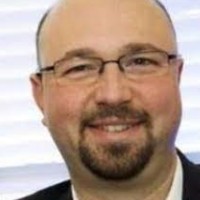 Talk Title: The Spherical Tokamak route to compact fusion reactors
Talk Title: The Spherical Tokamak route to compact fusion reactors
Date: 1st December 2021 at 12:00 (GMT)
delivered by Prof Michele Romanelli D.IC
watch the lecture recording
Abstract: During the past decades’ tokamak research has focused mainly on large aspect ratio devices where the vessel/plasma major radius is about a factor three larger than the plasma radius. The above research culminated in the design and construction of the International Thermonuclear Experimental Reactor, ITER. Spherical tokamaks (ST) with aspect ratio below two, represent an attractive alternative to large aspect ratio tokamaks as, in our opinion, they provide a faster, more economical and compact solution on the path to a fusion reactor. Spherical tokamaks are the focus of research at Tokamak Energy Ltd with its present device ST40 in operation and the first ST burning-plasma experiment reactor being designed, taking advantage of the high temperature superconductor (HTS) technology. HTS allow to design a spherical tokamak with magnetic field /comparable or exceeding that of present-day large aspect ratio tokamaks.
In this lecture we will explore the differences between conventional aspect ratio tokamaks and Spherical Tokamak plasmas, we will see examples of plasmas in ST40, the highest magnetic field ST in operation and we’ll see how the use of high temperature superconductor magnets can make compact reactors possible.
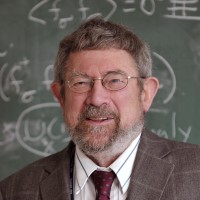 Talk Title: A Random Walk Through Physics To The Nobel Prize
Talk Title: A Random Walk Through Physics To The Nobel Prize
Date: 2 February 2022 at 14:00 (GMT)
delivered by Prof Mike Kosterlitz
Watch the lecture recording
Abstract: The talk is the story of my random walk through physics via Cambridge, Oxford, Turin and Birmingham finishing up at Brown University. I describe my very crooked path through life including physics and my other life as a mountaineer. I also include a somewhat simplified version of my prize winning work.
Talk Title: The World According to Physics
Date: 16 March 2022
delivered by Prof Jim S. Al-Khalili CBE FRS
Watch the lecture recording
Abstract: Where does theoretical physics stand at the beginning of the third decade of the 21st century? Are we finally approaching the end of physics, when the rich tapestry of the universe will be revealed to us and we will finally understand the true nature of reality? If we are honest then we must admit that, while what we do know is dazzlingly impressive, there is much we have yet to grasp, from the nature of space and time to the meaning quantum mechanics. This whistle-stop tour of selected topics in modern physics is an appraisal of what we know and what we have yet to figure out.
2020-21 Lectures
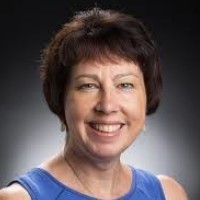
Talk Title: Journey to the Sun
Date: 21 October 2020, 12:00 (EST), 17:00 (BST)
delivered by Dr. Nicola Fox
Abstract: NASA Heliophysics research studies a vast system stretching from the sun to Earth to far beyond the edge of the planets. Studying this system—much of it driven by the sun’s constant outpouring of solar wind—not only helps us understand fundamental information about how the universe works, but also helps protect our technology and astronauts in space. NASA seeks knowledge of near-Earth space, because—when extreme—space weather can interfere with our communications, satellites, and power grids. The study of the sun and space can also teach us more about how stars contribute to the habitability of planets throughout the universe.
Mapping out this interconnected system requires a holistic study of the sun’s influence on space, Earth, and other planets. NASA has a fleet of spacecraft strategically placed throughout our heliosphere—from Parker Solar Probe at the sun observing the very start of the solar wind, to satellites around Earth, to the farthest human-made object, Voyager, which is sending back observations on interstellar space. Each mission is positioned at a critical, well thought-out vantage point to observe and understand the flow of energy and particles throughout the solar system—all helping us untangle the effects of the star we live with.
Biography: Dr. Nicky Fox is the Heliophysics Division Director in the Science Mission Directorate at NASA Headquarters in Washington, D.C. Until August 2018, Nicky worked at the Applied Physics Lab at Johns Hopkins University, where she was the chief scientist for Heliophysics and the project scientist for NASA’s Parker Solar Probe. She served as the deputy project scientist for the Van Allen Probes, and the operations scientist for the International Solar Terrestrial Physics program. Nicky received her bachelor of science in physics and doctorate in space and atmospheric physics from the Imperial College of Science, Technology and Medicine in London. She received a master’s degree in telematics and satellite communications from the University of Surrey.
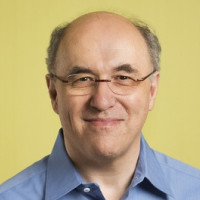 Talk Title: A Surprisingly Promising Approach to a Fundamental Theory of Physics
Talk Title: A Surprisingly Promising Approach to a Fundamental Theory of Physics
Date: 25 November 2020, 13:00 (EDT), 17:00 (GMT)
delivered by Dr. Stephen Wolfram
View the lecture recording
Biography: Dr. Stephen Wolfram is the creator of Mathematica, Wolfram|Alpha and the Wolfram Language; the originator of the Wolfram Physics Project, the author of A New Kind of Science and other books; and the founder and CEO of Wolfram Research. Over the course of more than four decades, he has been a pioneer in the development and application of computational thinking—and has been responsible for many discoveries, inventions and innovations in science, technology and business. A full biography can be found here; https://www.stephenwolfram.com/about/
Talk Title: Medical Physics and Nuclear Medicine
Date: 2 December 2020, 12:00 (GMT)
delivered by Tamar Willson
View the lecture recording
Download the lecture slides
Abstract: Many people will hear about nuclear medicine for the first time when they are referred for a test or treatment, and subsequently receive an administration of radioactive material in the form of an injection, a capsule, a gas they breathe in, or even mashed potato…
We will explore this versatile specialty, from the logistics of producing radioactive materials and processing them into useful forms, to the instrumentation involved in imaging radiation. We’ll go through a few examples of the wide variety of images which may be acquired, and what those images mean. We’ll also discuss the physicist’s role in the clinical environment, and the different routes into a medical physics role.
Biography: Tamar Willson completed her BSc in Physics at Imperial College London in 2012, and now works as a Nuclear Medicine Physicist at The Royal Free London NHS Foundation Trust. She provides scientific support for the extensive clinical activities carried out in the Nuclear Medicine department, including diagnostic nuclear medicine, radionuclide therapy and PET/CT. Research interests include hybrid imaging, image optimisation, and the radiation protection of both staff and patients.
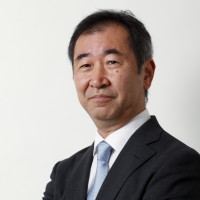 Talk Title: Neutrino studies in Kamioka
Talk Title: Neutrino studies in Kamioka
Date: 17 March 2021, 12:00 (GMT)
delivered by Prof. Takaaki Kajita
Abstract: Kamioka is a name of a local, small town in Japan. More than 30 years ago, the Kamiokande experiment began in Kamioka. Then Super-Kamiokande was constructed. In 1998, neutrino oscillation was discovered with the studies of atmospheric neutrinos in Super- Kamiokande. Since then, Super-Kamiokande has contributed to various neutrino studies. The next generation experiment, Hyper-Kamiokande, has been approved by the Japanese government in 2020. I will discuss the neutrino studies in these experiments.
Biography: Takaaki Kajita is the Special University Professor at theUniversity of Tokyo, and also the Director of the Institute for Cosmic Ray Research (ICRR) of the University of Tokyo. Kajita received his Ph.D. from the University of Tokyo School of Science in 1986, and has been researching at Kamiokande and Super-Kamiokande detectors at the Kamioka Observatory in central Japan. In 1998, at the Neutrino International Conference held in Takayama, Gifu, he showed the analysis results which provided strong evidence for atmospheric neutrino oscillations. In 2015 he shared the Nobel Prize in Physics for his role in discovering atmospheric neutrino oscillations. Currently, he is the project leader for KAGRA Project, aiming to explore the gravitational wave astronomy.
For his work he received the 2015 Physics Nobel prize; https://www.u-tokyo.ac.jp/en/whyutokyo/indpt_neutrino_017.html
2019-20 Lectures
Talk Title: Hairy Black Holes and Modified Gravity
Date: 27th November 2019 at 12 pm in Lecture Theatre 2
delivered by Callum Hunter, fourth-year theoretical physics undergraduate
Talk Title: Self-Organisation out of Disorder - L-H transition
Date: 5th February 2020 at 12 pm Lecture Theatre 1
delivered by Dr Eun-jin Kim, University of Sheffield
Talk Title: From Dawn til Dust: A perspective on early-career scientific research
Date: Wednesday, 18 March at 12 pm Lecture Theatre 3
delivered by Luke Simons, 4th-year Postgraduate Research student at Imperial College London working with Prof. Michael Coppins
Older
2018-19 Lectures
Talk Title: The role of MHD in controlling impurity accumulation in tokamaks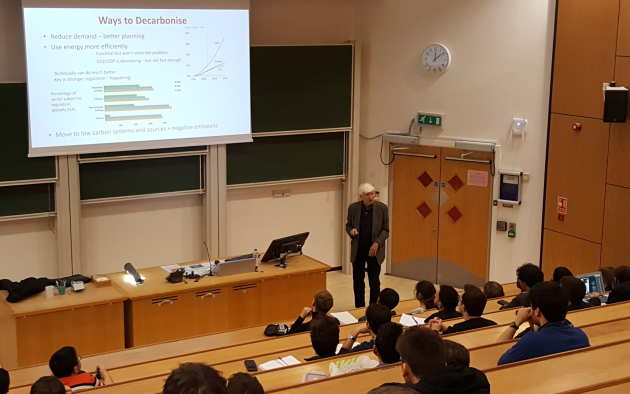
Date: Monday 29 October 2018 at 12pm in Lecture Theatre 2
delivered by Dr. Marco Sertoli, Culham Centre for Fusion Energy
Lecture Recording
Lecture Slides
Talk Title: The Energy Transition: How Can Physicists Help?
Date: Monday 26th November 2018 at 12pm in Lecture Theatre 2
delivered by Prof. Sir Chris Llewelyn Smith FRS, University of Oxford
Talk Title: Not All Those Who Wander are Lost
Date: Wednesday 6th February 2019 at 12pm in Lecture Theatre 1
delivered by Professor Dame Athene Donald, University of Cambridge
Talk Title: MEMS-based gravimeters. Applications include oil and gas prospecting, volcano eruption monitoring and sink hole detection
Date: Monday 18th February 2019 at 12pm in Lecture Theatre 1
delivered by Prof. Douglas J. Paul, School of Engineering, University of Glasgow
Talk Title: Spintronics: towards ultra-fast and low power computers
Date: Wednesday 20th March 2019 at 12pm in Lecture Theatre 3
delivered by Dr Chiara Ciccarelli, University of Cambridge
2017-18 Lectures
Talk Title: The JET Tokamak – past, present and fusion
delivered by Dr Ivor Coffey, Queen's University Belfast and CCFE
Talk Title: Solar flares – the most powerful explosions in the solar system
delivered by Prof. Philippa Browning, The University of Manchester
Talk Title: Fusion Energy - promises, progress and prospects
delivered by Prof. Kieran Gibson, The University of Yor
Talk Title: Liquid Crystals
delivered by Prof. Helen Gleeson, University of Leeds


